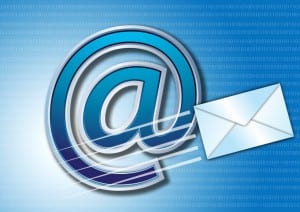Twenty years later, studies of email communication reveal a different situation. Bellotti and Ducheneaut’s enlightening study points out that email is, these days, the central application of organizational life. Their respondents “live” in email; across all sorts of job functions, they report that email is their primary application, the one that is never exited, and it is through their email that people manage contact lists, to do lists, store files, schedule meetings, etc. Email, similarly, is the primary form of organizational communication; it is the most likely mechanism by which work is assigned or reports are filed. For example, Markus notes a “corporate reliance on email to replace all communication” and describes email use as “a condition of employment” which spread first to the senior executives and then to their subordinates. By 1987, the CEO in their study claimed that “all managers […] used email daily as a fundamental way of doing intraorganizational business”. So, while email arrived in organizations rather awkwardly, fitting poorly into the expected patterns of use, it has now become thoroughly institutionalized. Email and organizational life line up once more.
 Email: Then and Now
Email: Then and Now
We have found the difference between earlier and more recent uses of email particularly striking in the context of a recent study we have conducted into communicative practices among college students. In particular, we were interested in their uses of IM.
College students occupy an interesting middle ground between the teen users and the workplace users who have been the subjects of other studies. Certainly, our data bears out earlier observations. Our informants refer to IM as an “informal,” “instantaneous”, “direct,” “interactive” medium: one for talking with friends, for social interaction, often that “doesn’t take a lot of thought.”
Our respondents are very attentive to the impressions given by different communication media, and these concerns affect their media choices. For instance, one reported, “Email tends to be more serious. … It’s easy because you don’t have to send it right away. It’s easy to make it formal and send it when you want”. They are conscious, too, of different media choices among different groups: “People like professors use email more, not IM. But a teacher doesn’t want to give out their screen name.”
Most importantly, though, their descriptions of media reflect aspects of the relationships they have with their conversational participants. In particular, for example, they distinguish between communication between peers, and communication with others in positions of power:
“Typically you use email to communicate with your boss or perspective employer”.
The formality of the conversation is linked to the sorts of communication that needs to be carried out. For instance, interactions over administrative issues and interactions with their professors are marked by a need to present a professional, thoughtful and competent image:
“I don’t like to use IM for official business kind of stuff because it seems too informal and too laidback. You’re not confident enough to pick up the phone but you’re kind of shy and chic-ish and use IM.”
“In email, I think you can also concentrate and focus on topics more.”
“How does email compare to IM. It’s how a letter compares to a telephone conversation. If what needs to be said needs to be said all at once in a complete form and you can’t have someone interrupt you then the best way is to email or write a letter.”
For these students, then, the difference between IM and email is not simply a difference between two communication media, but rather is a difference between the kinds of social relationships conducted through them.
The Institutional Agreements of Email
The email systems that these students use function in largely the same ways as those that were introduced into organizations twenty years ago, and the properties of email as a medium are broadly similar. However, they encounter email in a quite different set of institutional arrangements than people did twenty years ago. They encounter email now as a thoroughly institutional phenomenon. Email addresses are assigned to them by the university, and students are required to use them. Email is the means by which they communicate with staff and with faculty. It is the means by which they submit homework assignments, and the means by which their grades will be communicated to them. The university’s institutional practices require them to check their email on a regular basis. Email is a means for formal, organizational interaction.
Over time, ways of using communication media become embedded in the institution, and so it is here. A respondent in university administration, for example, showed us the formal email templates used for various forms of communication with students. We also uncovered a document provided to new students, guiding them in how to formulate email messages to academic mentors:
8. BE PROFESSIONAL. Treat e-mail as a somewhat formal communication – don’t use text messaging abbreviations, slang, four-letter words, etc. if you want to be taken seriously! And watch your grammar, spelling, etc.
Other guidelines, e.g. to include student ID in the message body, reinforce the sense that what is being conducted is formal, organizational interaction. In other words, what we find with IM here is a structural echo of the position of email at its introduction. Just as individual use of email was set against the backdrop of the more formal, institutional role of memos and other forms of organizational communication, so the students’ encounter IM in contrast to the institutionalized formality of email. IM is a technology for communication among peers (not dissimilar to the lateral communication engendered by email); in contrast, email is a technology through which formal relationships are maintained. This analysis suggests that the informality of IM, then, arises from the institutional setting within which it is encountered, as one of a range of technologies through which different sorts of activities can be carried out.
